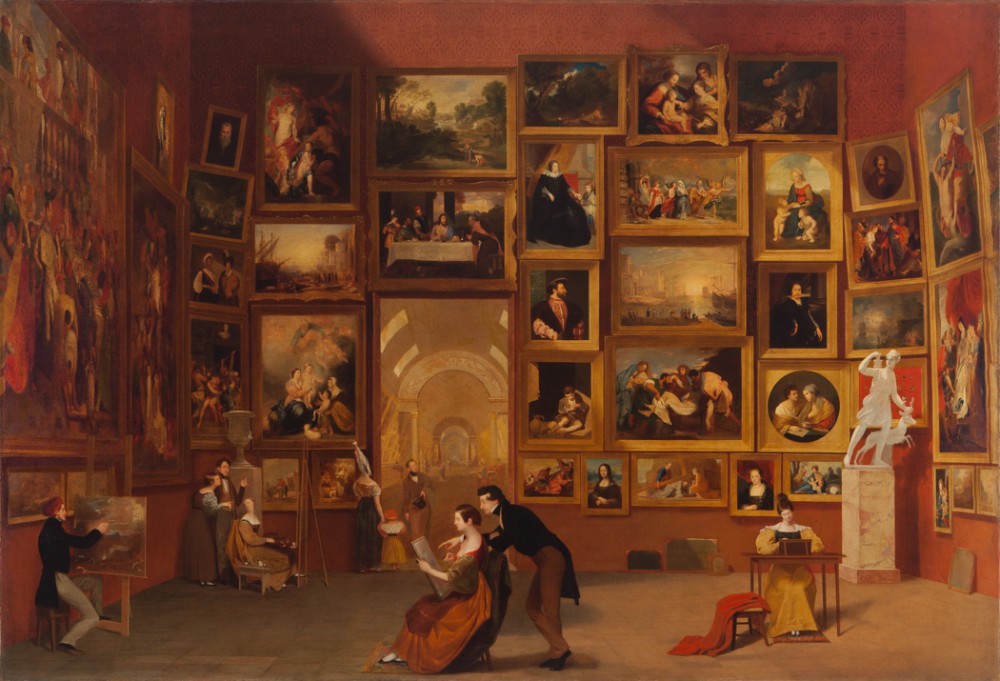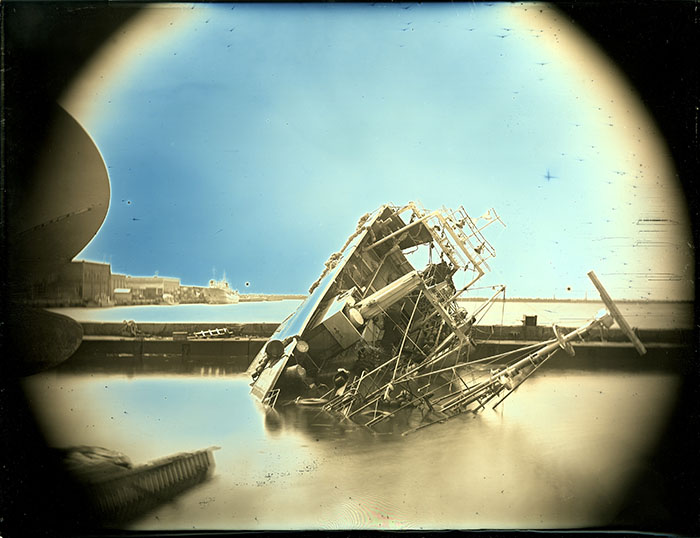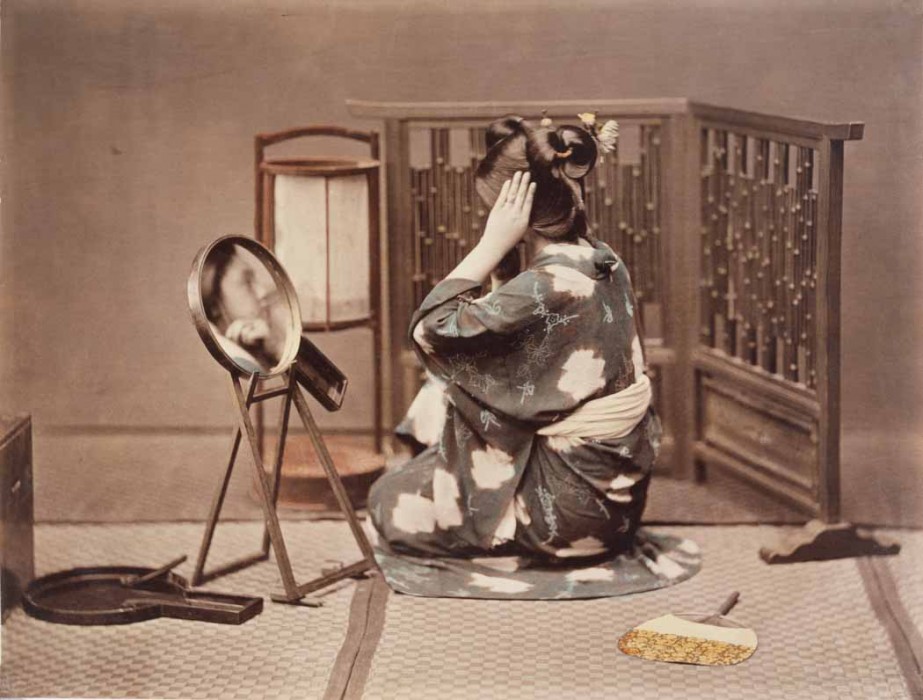The Art of Invention
Samuel F.B. Morse’s “Gallery of the Lourve” and the Art of Invention
Peabody Essex Museum
Oct 8 – Jan 8

This exhibition at the Peabody Essex Museum chronicles Samuel Morse’s trips to Europe and the journey of bringing photography to America. Morse is mostly known for the invention of telegraphs in America, but he was also a portrait painter and frequently visited other countries to study art. The exhibition begins in one room with a large painting of the Lourve, done by Morse, and a room to the side with a video presentation about Morse’s life. The first room in the exhibition is sparse and seems incomplete. Only one wall has artwork and the rest are void of anything but text about Morse and his invention. However, artwork covers the walls of the rest of the exhibtion. The second room showcases early methods of printing. The text on the wall indicates that Morse met with Louis Daguerre in France during the 1830s and became one of the first Americans to practice daguerreotypes in North America. This room features artists that used early types of photography and printing such as Sally Mann and Takashi Arai. I thought this room was a great way to explain daguerreotypes and alternative methods of photography to people who might have never seen or heard of them. It is an awkward transition from the first room to the second room because of the context of the first room. There is a small mention of photography in the text of the first room, so to move to other spaces that solely deal with photography is confusing.

The last space is the biggest of the exhibition and utilizes all of the wall space available. From left to right, the photographs are arranged in a timeline, starting with the first introductions of photography in America and ending with foreign photography with work from both American and Asian photographers. Because the exhibition’s main goal is to showcase the introduction of photography to America, it can be confusing to see photography from artists who were not American. However, it does show that much of early American photography was not done in America. Many of the American artists had photographs from Eastern Asia and their travels. Some artists included in this section were Mathew B. Brady, Samuel Bourne, and Harvey R. Marks. The photographs in this section were very interesting and showed the traditional style that many photographers used. Many formal portraits are showcased and early landscape photography is detailed. The end of the “timeline” in this room is the most intriguing moment in the exhibition. A couple of the photographs were done in black and white but then handpainted to include color. Many of these had the purpose of being brought back to America so photographers could show their travels, but the handpainted aspects of the photographs were not actually real and were used to exaggerate the “exoticness” of the locations visited. The best part of the exhibition, in my opinion, was seeing work by both Nicholas Nixon and Laura McPhee. I didn’t expect to see any MassArt teachers having their work in the show, but it was great to see their work in context with other photographers’ work.

Overall, the exhibition was informative and did a great job of explaining the introduction of photography into America. However, I think it could have flowed more organically and utilized the space more. The floor spaces were extremely empty which made the spaces bare except for the wall space. It wasn’t an interactive space and I think there could’ve been more done to get the audience involved and interested. I don’t think that the last room needed to be in a timeline format and may have been more informative with more text included in the space. The show itself was very beautiful and visually compelling. My favorite room was the second one that showed early photography and the different processes of photographing. I think that room was the most informative.
By Emily Gardner